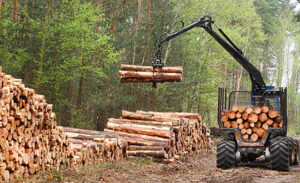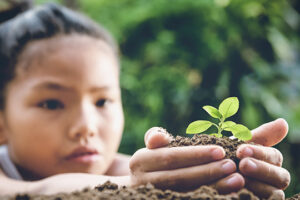
![]()
EASY WAYS YOU CAN HELP TREES
Trees can only continue to help us if we start doing a better job of helping them.
YOUR SMALL STEPS CAN MAKE A BIG DIFFERENCE FOR THE TREES
As you have learned throughout this website, there are many ways that trees are helping you and your family every day and many more ways that trees can help you if you let them. Of course, this is contingent upon the continued existence of forested areas on our planet, which is not going to happen without all of us pitching in to boost the world’s tree population and minimize our excessive and unsustainable use of wood and other products that are derived from trees. Here are some easy ways that you can help the trees:
Use Paper Wisely
Become more mindful of the paper products that you use on a regular basis and start reducing your paper consumption. According to Middle Georgia State University, in the United States alone approximately 1 billion trees worth of paper are thrown away each year. Ideas to easily manage your paper use more efficiently include:

- Use cloth napkins
- Write on both sides of your writing paper
- Switch to e-cards
- Switch to paperless billing
- Re-use gift bags
- Save paper scraps and make your own post-it notes
- Save more documents electronically to reduce printing
- Use plastic, washable plates for picnics instead of paper plates
- Use a reusable lunch box instead of paper bags
- Switch to online magazines and newspapers
- Borrow and share books – use your local library more often
- Use an electronic reader and read more e-books
- Recycle as much of the paper that you do use as possible
Select Slower Shipping Times
Selecting slower shipping times when you purchase products from Amazon and other online stores allows the shipper to bundle more products in the same cardboard box and also reduces the carbon footprint of the related delivery vehicles. Watch this excellent video to learn more.
Use Tree-Friendly Diapers
Disposable diapers are an environmental nightmare. They contribute to global warming, landfills, and the destruction of trees. According to Dufferin Research it takes 200-400 kg of fluff pulp to keep one baby in disposables for one year. It is estimated that this requires one billion trees per year (globally) and approximately 4.5 for each baby who uses them. For some tree-friendly alternatives, check out Brightly’s website.
Plant Trees In Your Own Yard And Elsewhere
Planting trees on your property will increase your property value and lower your utilities bills. Planting trees in your neighborhood can help boost community spirit, lower crime rates, and more. Choose trees that do well in your area and do research on proper planting techniques so the trees will thrive. Visit the Arbor Day Foundation for instructions on how to plant the type of trees you want to plant.
Buy Lumber That Comes From Sustainably Managed Forests
 Over 30% of current global timber supply is from illegal sources or from suppliers who are not practicing sustainable forestry. If you buy non-certified lumber you are supporting deforestation. Certified products will have an identifying label stamped or attached to the product. For more information and to see sample labels visit these websites: FSC (Forest Stewardship Council) and PEFC (Programme for the Endorsement of Forest Certification).
Over 30% of current global timber supply is from illegal sources or from suppliers who are not practicing sustainable forestry. If you buy non-certified lumber you are supporting deforestation. Certified products will have an identifying label stamped or attached to the product. For more information and to see sample labels visit these websites: FSC (Forest Stewardship Council) and PEFC (Programme for the Endorsement of Forest Certification).
Use Bamboo Products As A Wood Alternative
 Bamboo, which is actually a grass that grows very rapidly and is highly sustainable, is now being used to make loads of products that traditionally have been made from trees, including flooring, panel board, other construction materials, furniture, veneers, clothing, bedding, and even toilet paper.
Bamboo, which is actually a grass that grows very rapidly and is highly sustainable, is now being used to make loads of products that traditionally have been made from trees, including flooring, panel board, other construction materials, furniture, veneers, clothing, bedding, and even toilet paper.
Buy Used Wooden Furniture
Wooden furniture can last for hundreds of years and provides all the original function of the piece and often some interesting history too. Shop at antique shops and second hand stores for wooden furniture as a first choice. Refinish wooden pieces if you want a new look or donate them to a thrift shop so someone else can find them and turn them into treasures.
Never Start A Forest Fire
Wildfires impact almost a billion acres of land each year around the globe and are the #1 cause of deforestation in the United States. Human-sparked fires in the US account for almost 90% of the wildfires. According to an analysis of California wildfires over the past decade, human-sparked fires burn faster and kill more trees. Do not burn open fires in dry areas and distinguish campfires thoroughly. Do not throw burning cigarettes on the ground. Have your trees pruned regularly so they do not intermingle with electrical wires.
Help Your Children Experience The Benefits And Wonder Of Trees
 It is our children who will soon be the new stewards of the planet and of all the trees. Do your best to teach your children and grandchildren about the benefits of trees and help them cultivate a loving and appreciative relationship with trees by providing opportunities to interact with trees and to experience the other wonders of woodland areas.
It is our children who will soon be the new stewards of the planet and of all the trees. Do your best to teach your children and grandchildren about the benefits of trees and help them cultivate a loving and appreciative relationship with trees by providing opportunities to interact with trees and to experience the other wonders of woodland areas.
Donate To Organizations That Are Helping Trees
There are many organizations around the world that are doing great work toward boosting the tree population on the planet and upgrading the treatment of trees in general. Here are a few outstanding organizations to donate to:
The USA National Forest Foundation
On Earth Day 2018, the National Forest Foundation launched a campaign to plant 50 million trees in U.S. forests within five years. The need for reforestation is partly due to pests such as the mountain pine beetle and the increased frequency and intensity of forest fires. Thanks to a matching grant from the U.S. Forest Service, every dollar you donate equals one planted tree.
The Nature Conservancy
The Nature Conservancy solicits funds to support its goal of a billion new trees planted around the world by 2025. Donors can target their contribution to one of four critical destinations where forests have been severely degraded: The United States, Brazil, China, or Mexico.
The Arbor Day Foundation
In early 2019 the Arbor Day Foundation announced the launch of its Time for Trees initiative, a commitment to plant 100 million trees in forests and communities worldwide by 2022 – the 150th anniversary of Arbor Day. The initiative will leverage trees as a simple, powerful way to preserve the necessities of life on Earth that are becoming increasingly compromised, as well as reverse the damage done by climate change. This noble goal has already been achieved, almost six months ahead of schedule!
